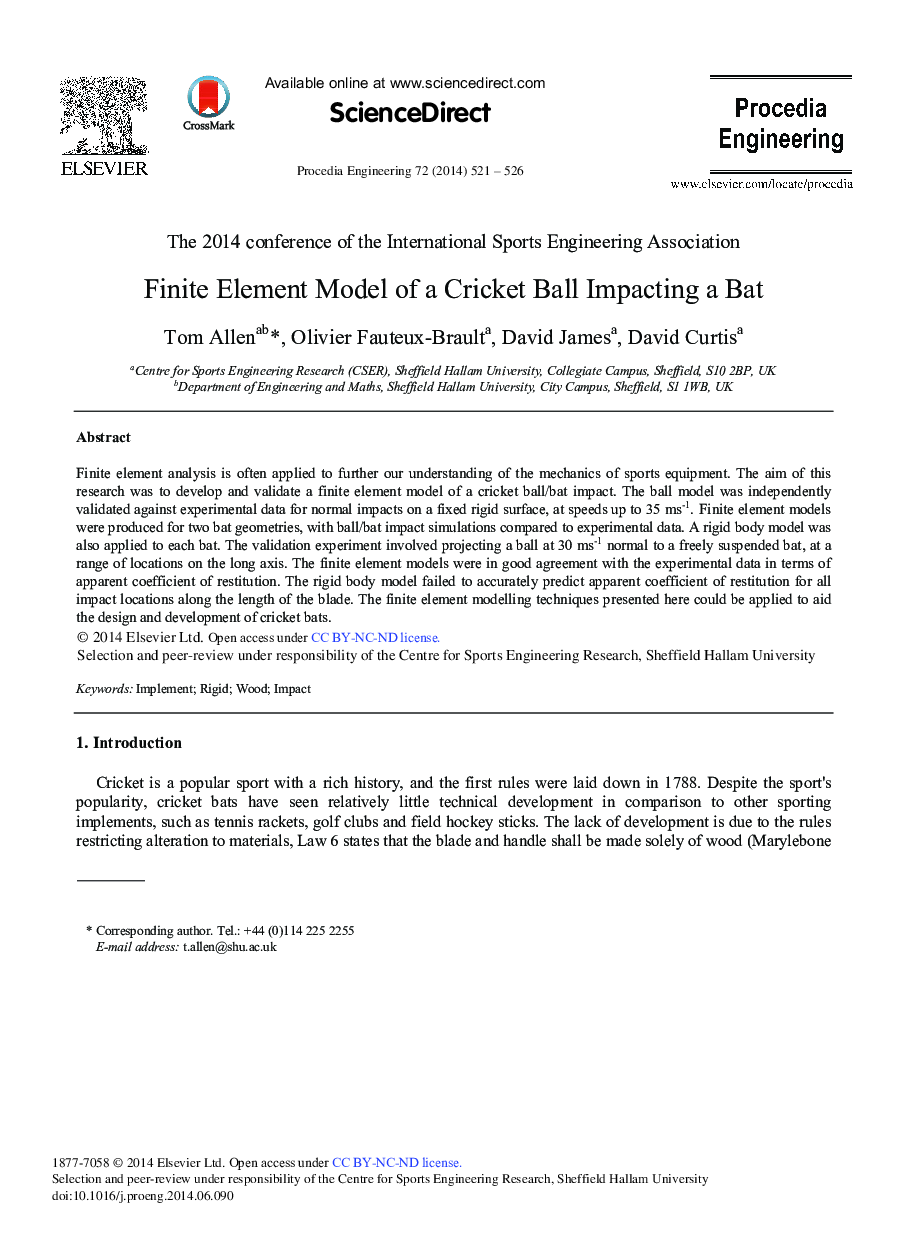| Article ID | Journal | Published Year | Pages | File Type |
|---|---|---|---|---|
| 859003 | Procedia Engineering | 2014 | 6 Pages |
Finite element analysis is often applied to further our understanding of the mechanics of sports equipment. The aim of this research was to develop and validate a finite element model of a cricket ball/bat impact. The ball model was independently validated against experimental data for normal impacts on a fixed rigid surface, at speeds up to 35 ms-1. Finite element models were produced for two bat geometries, with ball/bat impact simulations compared to experimental data. A rigid body model was also applied to each bat. The validation experiment involved projecting a ball at 30 ms-1 normal to a freely suspended bat, at a range of locations on the long axis. The finite element models were in good agreement with the experimental data in terms of apparent coefficient of restitution. The rigid body model failed to accurately predict apparent coefficient of restitution for all impact locations along the length of the blade. The finite element modelling techniques presented here could be applied to aid the design and development of cricket bats.
